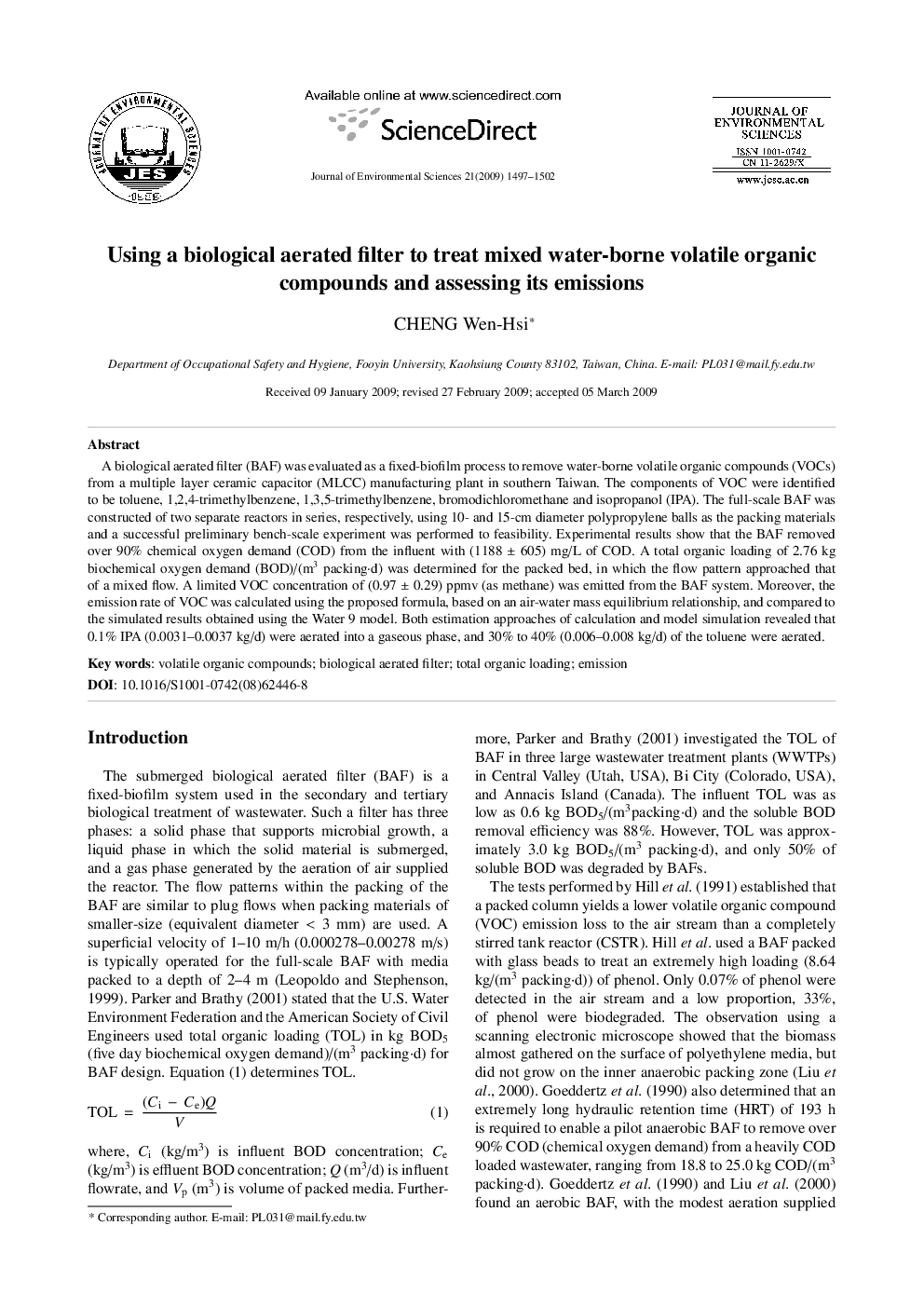| کد مقاله | کد نشریه | سال انتشار | مقاله انگلیسی | نسخه تمام متن |
|---|---|---|---|---|
| 4455409 | 1312517 | 2009 | 6 صفحه PDF | دانلود رایگان |

A biological aerated filter (BAF) was evaluated as a fixed-biofilm process to remove water-borne volatile organic compounds (VOCs) from a multiple layer ceramic capacitor (MLCC) manufacturing plant in southern Taiwan. The components of VOC were identified to be toluene, 1,2,4-trimethylbenzene, 1,3,5-trimethylbenzene, bromodichloromethane and isopropanol (IPA). The full-scale BAF was constructed of two separate reactors in series, respectively, using 10- and 15-cm diameter polypropylene balls as the packing materials and a successful preliminary bench-scale experiment was performed to feasibility. Experimental results show that the BAF removed over 90% chemical oxygen demand (COD) from the influent with (1188 ± 605) mg/L of COD. A total organic loading of 2.76 kg biochemical oxygen demand (BOD)/(m3 packing·d) was determined for the packed bed, in which the flow pattern approached that of a mixed flow. A limited VOC concentration of (0.97 ± 0.29) ppmv (as methane) was emitted from the BAF system. Moreover, the emission rate of VOC was calculated using the proposed formula, based on an air-water mass equilibrium relationship, and compared to the simulated results obtained using the Water 9 model. Both estimation approaches of calculation and model simulation revealed that 0.1% IPA (0.0031–0.0037 kg/d) were aerated into a gaseous phase, and 30% to 40% (0.006–0.008 kg/d) of the toluene were aerated.
Journal: Journal of Environmental Sciences - Volume 21, Issue 11, 2009, Pages 1497-1502